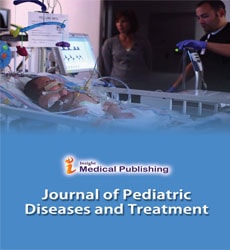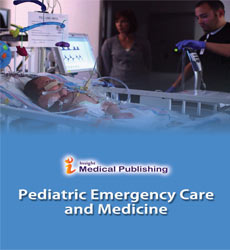The Characteristics, Risk Factors and Visual Outcomes of the Preterm Infant with Retinopathy of Prematurity (ROP) in a Tertiary Care Center, Sri Lanka - A Short Commentary
Ekanayake EMSB, Samarasinghe GP, Sriharanadan P, Karunanayake KAIU, and Kobbekaduwa SR
DOI10.36648/ippecm.21.6.4
1Postgraduate Institute of Medicine, Sri Lanka
2Teaching Hospital of Kandy, Sri Lanka
- *Corresponding Author:
- Ekanayake EMSB
Postgraduate Institute of Medicine
Sri Lanka
Tel: 07521681593
E-mail: sb81ekanayake@gmail.com
Received Date: August 17, 2020; Accepted Date: December 23, 2020; Published Date: January 02, 2021
Citation: Ekanayake EMSB, Samarasinghe GP, Sriharanadan P, Karunanayake KAIU, Kobbekaduwa SR (2021) The Characteristics, Risk Factors and Visual Outcomes of the Preterm Infant with Retinopathy of Prematurity (ROP) in a Tertiary Care Center, Sri Lanka – A Short Commentary. Pediatr Emerg Care Med Open Access. Vol.6 No.1:4.
Commentary
Infants born preterm are at risk of experiencing a variety of ophthalmic problems during the neonatal period, sometimes with sequelae which may become apparent later in infancy, childhood or adult life. The best-known example is retinopathy of prematurity (ROP). The objective is to describe the characteristics, risk factors and visual outcome of the preterm infants with retinopathy of prematurity (ROP), who were attending a tertiary care eye unit, for a period of 3 years. This is a retrospective study; all infants who attended ophthalmology unit during the study period were recruited. A total of 1091 infants were included. Of them 53% was male. 41.5% males and 41% females developed ROP later in infancy. Gestational age ranges between 24-41 weeks (mean-33.23). Mean birth weight is 1705 g (550-4250). Low birth weight (<1500 g) and prematurity (<32 weeks) are the main risks for the development of ROP. 63.3% of LBW and 33% of normal birth weight babies developed some degree of ROP and was significantly (p<0.00001) higher. 75% of pre-term and 25% of term babies acquired the disease. (p< .00001).
In normal BW group, 8% was preterm. Of them 2/3 developed ROP (P<0.00001). In LBW group, 76% pre term and 45% term developed ROP. (P<0.00001). More importantly 105 (18.6%) babies with BW >1500 g and >32 weeks developed POR. The larger, more mature babies develop severe ROP which is out of WHO defined criteria. Therefore local ROP screening criteria should be adjusted according to regional data and clinical experiences.

Open Access Journals
- Aquaculture & Veterinary Science
- Chemistry & Chemical Sciences
- Clinical Sciences
- Engineering
- General Science
- Genetics & Molecular Biology
- Health Care & Nursing
- Immunology & Microbiology
- Materials Science
- Mathematics & Physics
- Medical Sciences
- Neurology & Psychiatry
- Oncology & Cancer Science
- Pharmaceutical Sciences
